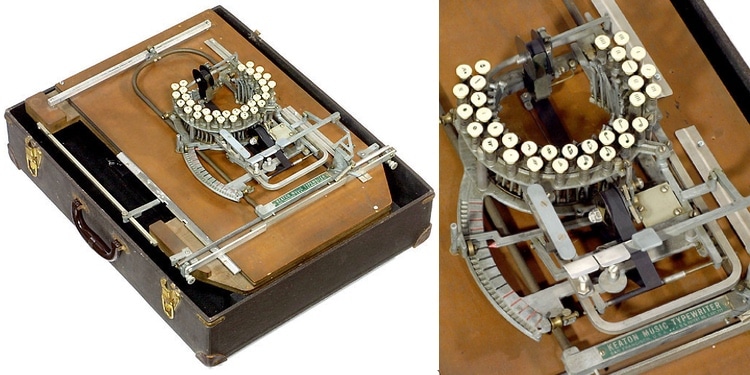It is, if you have a Keaton Musical Typewriter.
At first glance, it looks cumbersome, but considering how fiddly (sorry) musical notation is, it could have been quite useful.
I certainly wouldn't have any use for one, but it would be quite a conversation piece.It’s an interesting arrangement that gives the Keaton Music Typewriter its distinctive look. In terms of engineering, thanks to a curved meter on the left that Keaton called the Scale Shift Handle and Scale Shift Indicator, it’s easy to control exactly where the notes and characters fall on the page. By moving the handle up or down a notch, the typewriter adjusts to print 1/24 inch in either direction. Moving one notch up or down will cause the character to fall one musical step either way.In order to make sure that musicians could see where they were about to print, Keaton included a long needle next to the ribbon that leaves nothing up to chance. Interestingly, the two keyboards work in different ways with the Scale Shift Handle. The larger keyboard with the notes, scales, sharps, and flats moves freely in tandem with the Scale Shift Handle. The smaller keyboard, which contains items like bar lines and ledger lines, stays in place since these characters always appear in the same place with respect to the staff lines.

No comments:
Post a Comment